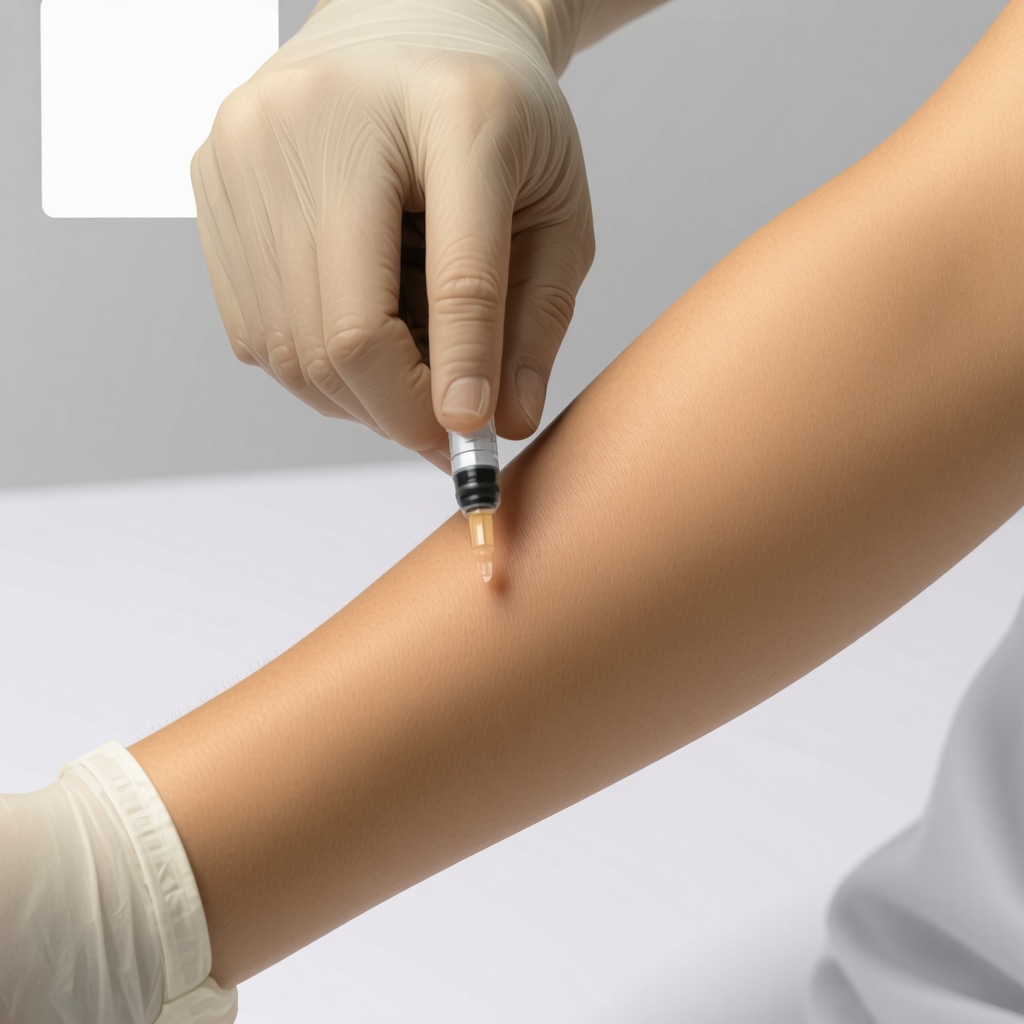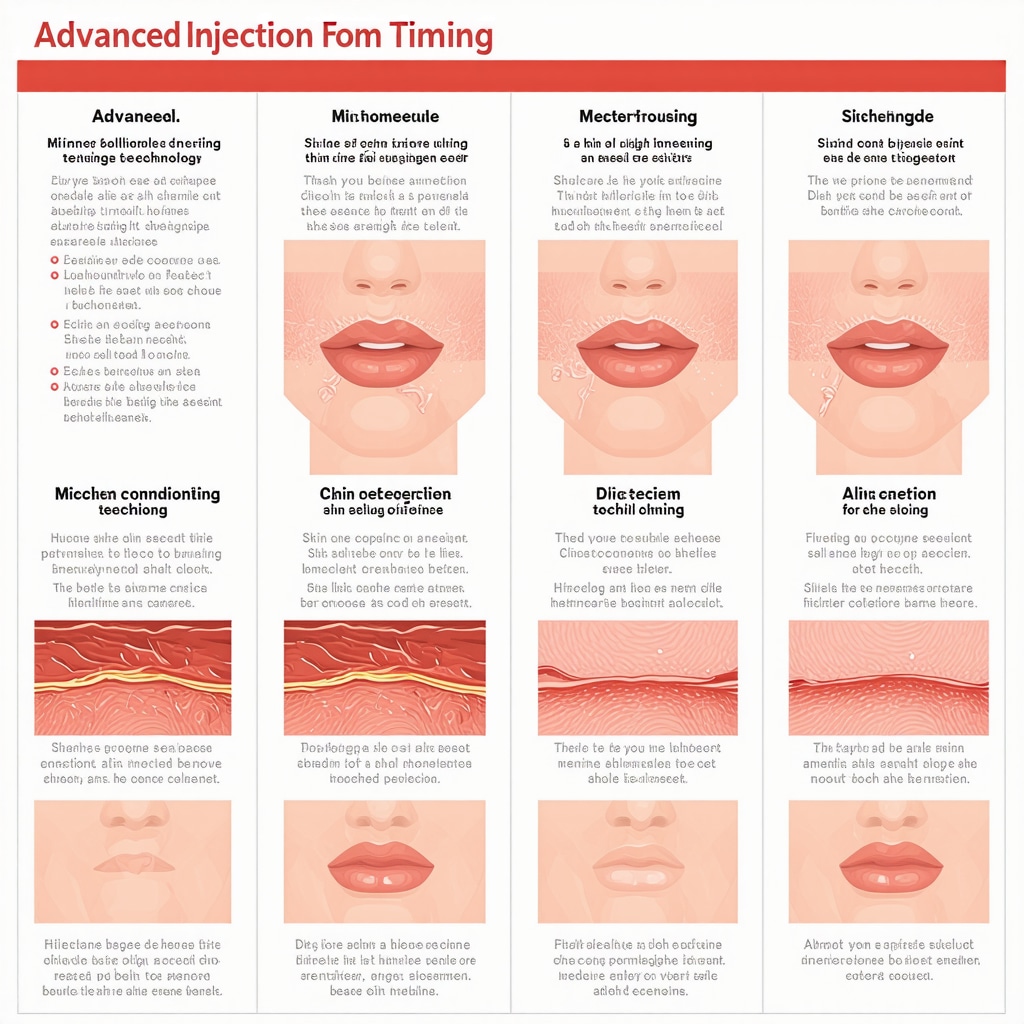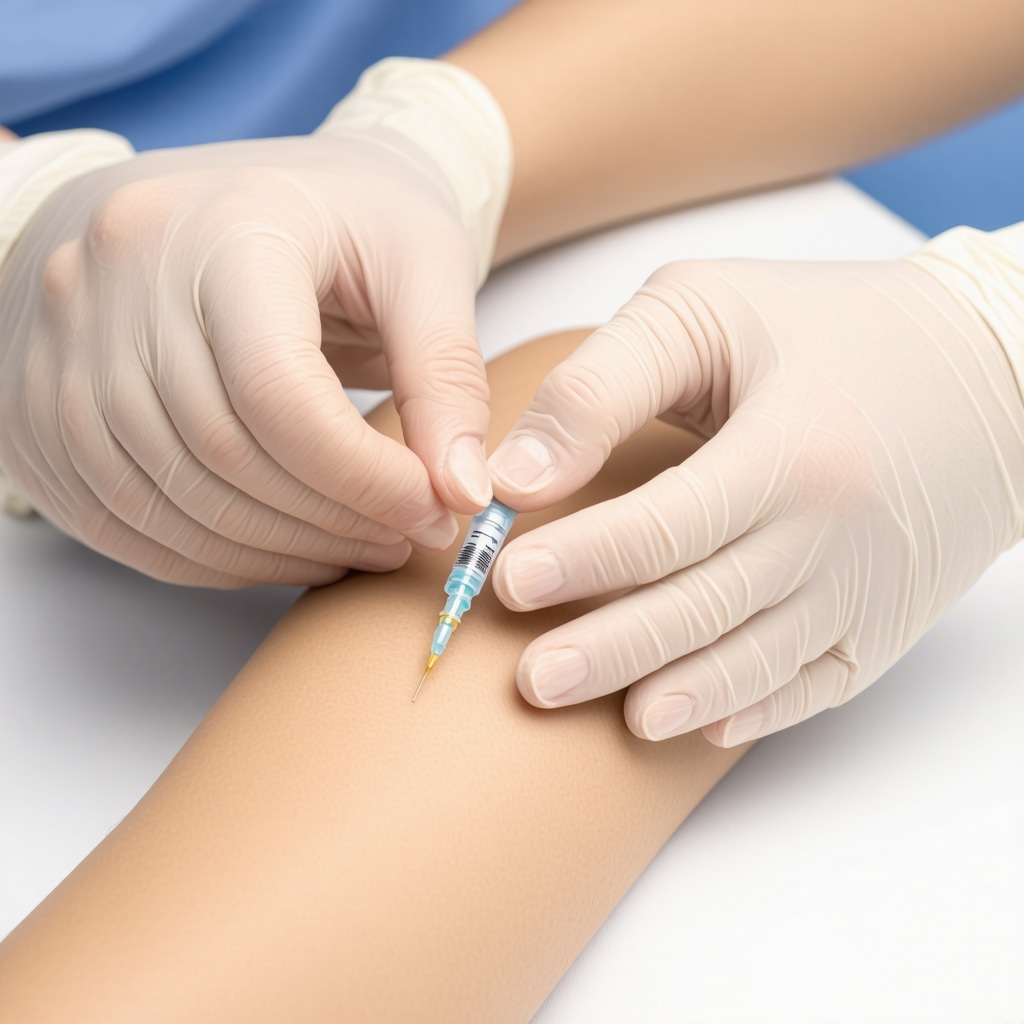Why Does Injection Bruising Crash the Weight Loss Party?
Let’s face it: starting a prescription injection for weight loss is a big deal. You’re hopeful, maybe a little anxious, and definitely committed. But then, out of nowhere, a bright purple bruise appears at the injection site like an uninvited guest at your wellness soiree. It’s not just unsightly; it can be downright discouraging.
Injection bruising is more common than you might think. It’s that pesky little side effect that can make your journey feel a bit rougher. But fear not — with a few savvy tips and tricks, you can prevent those bruises from stealing your spotlight.
Mastering the Art of the Injection: Small Tweaks, Big Results
Ever wonder why some people glide through their injection routine unscathed while others end up with a constellation of bruises? It often boils down to technique and a little bit of know-how.
Could Changing Your Injection Site Be the Game Changer?
Rotating your injection site isn’t just a doctor’s drill — it’s essential. Repeatedly injecting into the same spot can irritate blood vessels, leading to bruising. Try alternating between your abdomen, thigh, and upper arm. This simple shuffle reduces localized trauma and gives your skin a breather.
Also, consider the angle and depth of your injection. A shallow injection might hit small blood vessels, causing bruising, while going too deep can also create problems. Aim for the middle ground, and if in doubt, ask your healthcare provider for a quick refresher on technique.
Pre-Injection Prep: Warming Up Without Breaking a Sweat
Cold skin and cold medication can be a recipe for bruises. Warm the injection area gently with a warm compress or by rubbing it lightly before the shot. This increases blood flow and relaxes tissues, making the injection smoother and less bruise-prone.
Similarly, make sure your medication is at room temperature before injecting. Injecting cold medicine can cause unnecessary irritation and discomfort.
Post-Injection TLC: What Your Skin Craves After the Dose
After the injection, don’t just walk away. Apply gentle pressure with a clean cotton ball or gauze for a few minutes — this helps seal blood vessels and reduce bleeding under the skin that turns into bruising.
Some swear by a cold pack afterward to minimize swelling and discoloration, but be careful not to apply ice directly — wrap it in a cloth first.
Trust, But Verify: When Bruising Signals Something Else
While most bruising is harmless, persistent or unusually large bruises might hint at other issues—like blood clotting problems or medication reactions. If bruises pop up like wildfire or are accompanied by pain and swelling, it’s time to seek medical advice. Transparency with your healthcare provider ensures your safety and keeps your weight loss journey on track.
Looking for More Insider Tips on Prescription Injection Weight Loss?
For those navigating the intricate world of injectable weight loss treatments, this guide offers expert advice on injection techniques, safety, and maximizing results. It’s like having a knowledgeable companion on your weight loss voyage.
And if you want to dive deeper into managing side effects and optimizing your routine, check out these practical tips tailored for injection users.
Remember, the journey to fat loss is as much about self-care and education as it is about the medication itself. If you’ve got your own stories or tips about preventing injection bruising, don’t be shy — share them in the comments below! Your experience could be the golden nugget someone else needs.
As a final note, the Mayo Clinic offers reliable insight on injection site bruising and how to manage it, reinforcing the importance of technique and care (Mayo Clinic on Injection Bruising).
Enhancing Injection Techniques: Beyond the Basics for Bruise Prevention
While fundamental injection methods reduce bruising risk, subtle refinements can elevate your experience. For instance, using a new needle for each injection minimizes tissue trauma and contamination, which are common contributors to bruising. Additionally, avoiding aspirating (pulling back the plunger before injection) is often recommended with subcutaneous injections, as it prevents unnecessary vessel injury.
Moreover, consider the speed of injection. A slow, steady push allows the medication to disperse evenly, reducing local pressure that could rupture small capillaries. These nuanced adjustments, though seemingly minor, collectively fortify your skin’s resilience against bruising.
Nutrition and Skin Health: The Overlooked Allies Against Bruising
Beyond injection technique, your body’s nutritional status profoundly influences bruising propensity. Nutrients such as vitamin C, vitamin K, and bioflavonoids support collagen synthesis and capillary integrity, essential for skin strength and repair.
Incorporating foods rich in these nutrients—like citrus fruits, leafy greens, and berries—can bolster your skin’s defenses. Conversely, excessive alcohol consumption or blood-thinning supplements may exacerbate bruising risk. Healthline provides an excellent overview of bruise-healing foods, emphasizing the synergy between diet and skin health during injectable therapies.
Psychological Dimensions: Can Stress Influence Injection Site Bruising?
Is There a Link Between Stress Levels and Increased Bruising in Injection Therapy?
Emerging research suggests that chronic stress may impair wound healing and capillary strength, potentially making bruises more likely or slower to resolve. Stress triggers inflammatory responses and hormonal fluctuations that could subtly weaken blood vessels.
Mindfulness, relaxation techniques, and adequate sleep might therefore serve as indirect but vital components in managing injection site reactions. Integrating these strategies can enhance your overall wellness and possibly reduce bruising incidents, reinforcing the holistic nature of weight loss treatment.
Innovative Post-Injection Care: Beyond Cold Compresses
While cold compresses are classical remedies, some patients benefit from gentle massage around (not on) the injection site after a brief waiting period. This promotes circulation and lymphatic drainage, which may accelerate bruise resolution.
Additionally, topical arnica formulations or vitamin K creams have shown anecdotal success in minimizing discoloration, though clinical evidence varies. Always consult your healthcare provider before introducing new topical agents to your regimen to ensure safety and compatibility with your medication.
For those looking to deepen their knowledge about managing side effects and enhancing injection safety, the resource on avoiding side effects in prescription injection weight loss offers practical guidance and expert-approved tips.
Feel free to share your experiences or questions regarding injection bruising prevention in the comments below—your insights may empower others navigating similar challenges.
Precision Injection Tools: Evaluating Needle Gauge and Length for Optimal Results
When it comes to minimizing injection site bruising, the choice of needle is far from trivial. A needle that is too thick or too long can cause unnecessary trauma to the subcutaneous tissues and capillaries, increasing the risk of bruising. Conversely, a needle that is too short might not deliver the medication properly, causing leakage and irritation. Expert clinicians often recommend using a fine gauge needle—typically between 29 and 31 gauge—with a length appropriate to the injection site and patient body composition.
For example, thinner patients might benefit from shorter needles (4-6 mm), while those with more subcutaneous fat may require longer needles (8-12 mm). Tailoring needle specifications to individual anatomy not only optimizes drug delivery but also significantly reduces microvascular injury. This advanced customization approach is gaining traction in clinical practice and research, as highlighted by recent studies published in the Journal of Clinical Medicine.
Exploring Pharmacological Interventions: Can Topical Agents Preempt Bruising?
Beyond mechanical technique, pharmacological adjuncts offer intriguing potential in bruising management. Pre-application of topical agents containing vitamin K or heparinoids has been posited to fortify capillary walls and accelerate hematoma resorption. While anecdotal reports abound, rigorous randomized controlled trials remain sparse.
Furthermore, systemic considerations such as adjusting concurrent medications that affect coagulation (e.g., NSAIDs or anticoagulants) require close medical supervision. This underscores the necessity of a comprehensive medication review before initiating injectable weight loss therapy. Collaborating closely with healthcare providers ensures that all variables influencing bruising are addressed holistically.
How Can Patients Optimize Injection Timing Relative to Their Daily Activities to Minimize Bruising?
Timing injections strategically throughout the day can influence bruising outcomes. For instance, administering injections when the body is relaxed—such as after a warm bath or gentle stretching—may reduce vascular tension and capillary fragility. Additionally, avoiding injection immediately before intense physical activity or heavy lifting can prevent exacerbation of microvascular injury.
Patients are encouraged to observe their individual patterns and adapt injection schedules accordingly, enhancing comfort and reducing side effects. This personalized approach reflects the broader trend towards precision medicine in weight management.
Integrating Technological Innovations: Smart Injection Devices and Their Role in Bruise Reduction
Cutting-edge smart injection devices are revolutionizing how patients administer medication. These devices can control injection speed, angle, and depth with remarkable precision, minimizing tissue trauma. Some models provide real-time feedback and reminders for site rotation, which are critical factors in bruise prevention.
Early adopters report improved adherence, decreased discomfort, and fewer bruises. Ongoing research aims to validate these findings and explore integration with mobile health platforms for comprehensive injection management. Such innovations exemplify how technology can empower patients and enhance therapeutic outcomes.

Decoding the Science Behind Injection Bruising: A Microscopic View of Capillary Injury and Repair
Understanding the pathophysiology of bruising at a cellular level reveals the delicate interplay between capillary integrity, inflammatory response, and tissue repair mechanisms. Injection-induced trauma disrupts endothelial cells lining small blood vessels, leading to leakage of blood components into the interstitial space, manifesting as visible bruises.
The subsequent cascade involves platelet aggregation, clot formation, and recruitment of immune cells to clear debris and facilitate healing. Variations in individual inflammatory responses and skin properties contribute to the extent and duration of bruising, highlighting why some patients bruise more easily than others.
Advancements in dermatological research continue to elucidate these processes, informing targeted interventions to optimize injection therapy safety and comfort.
Deepening Your Expertise: Where to Find Authoritative Resources and Support
For healthcare professionals and patients alike seeking to master injection techniques and manage side effects, the National Center for Biotechnology Information (NCBI) offers comprehensive, peer-reviewed literature on injection best practices and skin physiology.
Engaging with such expert-level content not only enhances practical skills but fosters a deeper appreciation of the biological nuances underpinning effective weight loss injections.
Ready to refine your injection technique and minimize bruising? Dive into specialized resources and share your insights or questions below — your contributions enrich this community of informed individuals striving for optimal health outcomes.
Precision Injection Timing: Can When You Inject Influence Bruising Severity?
Timing your injections thoughtfully throughout the day may significantly affect the likelihood and severity of bruising. Administering injections during periods of low vascular tension—such as after a warm shower or light stretching—can reduce capillary fragility. Conversely, injecting immediately before rigorous physical activity or heavy lifting could exacerbate microvascular injury, leading to increased bruising. This nuanced approach to injection scheduling supports a more comfortable and effective weight loss journey.
How Does Individual Vascular Health Impact Injection Bruising Risk?
Each person’s vascular integrity and skin resilience differ, influenced by genetics, underlying health conditions, and lifestyle factors. Conditions like hypertension, diabetes, or connective tissue disorders can predispose individuals to more pronounced bruising. Additionally, age-related changes in skin elasticity and capillary strength play a role. Understanding these personalized vascular factors allows healthcare providers to tailor injection techniques and recommend adjunctive therapies, optimizing both safety and efficacy. For tailored guidance, consider consulting resources such as clinical studies on injection site physiology that delve into these complexities.
Emerging Role of Microneedle Technology in Minimizing Injection Trauma
Microneedle patches represent a cutting-edge innovation poised to transform injectable weight loss treatments. These ultra-fine needles penetrate the skin minimally, delivering medication with reduced tissue disruption and virtually eliminating bruising. Early clinical trials demonstrate promising results in patient comfort and adherence, particularly for those prone to bruising or injection anxiety. While still emerging, integrating microneedle technology could redefine best practices in fat loss injections, emphasizing patient-centric care and precision delivery.
Optimizing Injection Site Preparation: Advanced Skin Conditioning Techniques
Beyond simple warming, pre-injection skin conditioning methods like controlled hydration and barrier reinforcement can enhance capillary resilience. Topical agents containing hyaluronic acid or ceramides may fortify the skin’s protective layers, reducing vulnerability to injection-induced trauma. Furthermore, gentle exfoliation protocols prior to injection days help maintain skin health, promoting faster recovery and less discoloration. These sophisticated preparations complement standard warm compresses and underscore the value of holistic skin care in injection therapy.
Pharmacogenomics and Injection Side Effects: Could Your Genes Predict Bruising Propensity?
The burgeoning field of pharmacogenomics investigates how genetic variations influence individual responses to medication, including susceptibility to side effects like bruising. Polymorphisms affecting platelet function, coagulation pathways, or inflammatory mediators may modulate bruising risk after injections. While clinical applications are nascent in weight loss injection protocols, future integration of genetic screening could enable personalized therapy plans that proactively mitigate adverse reactions.
What Are the Best Practices for Integrating Injection Therapy into a Holistic Weight Loss Regimen?
Injection therapy’s success hinges not only on technique but also on comprehensive lifestyle integration. Coordinating injections with balanced nutrition, stress management, and physical activity amplifies therapeutic effects and minimizes complications. For instance, aligning injection schedules with meal timing optimizes appetite control, as detailed in expert tirzepatide meal timing strategies. Moreover, engaging in mindfulness practices reduces stress-induced vascular fragility, further decreasing bruising occurrence. Embracing this multifaceted approach ensures sustainable fat loss and enriched patient experience.
Continuing Your Journey: Dive Deeper Into Expert-Backed Injection Mastery
For those eager to elevate their injection technique and overall weight loss strategy, exploring comprehensive resources like mastering prescription injection weight loss with medical guidance offers invaluable insights. Here, advanced tips on site rotation, needle selection, and managing side effects empower patients and clinicians alike to achieve optimal outcomes.
We invite you to share your experiences, questions, or innovative tips below. Your contributions foster a vibrant community dedicated to conquering injection challenges and celebrating weight loss victories together.

Expert Insights & Advanced Considerations
Tailoring Needle Specifications to Individual Anatomy Minimizes Tissue Trauma
Optimizing needle gauge and length based on patient body composition is a critical yet often overlooked factor in reducing injection site bruising. Fine gauge needles (29–31G) paired with appropriate lengths—shorter for leaner individuals and longer for those with more subcutaneous fat—ensure precise subcutaneous delivery while minimizing capillary injury. This customization enhances patient comfort and reduces local hematoma formation, as detailed in clinical analyses from the Journal of Clinical Medicine.
Strategic Injection Timing Aligns with Vascular Physiology to Diminish Bruising Risks
Administering injections during periods of low vascular tension—such as after warming up or light activity—can decrease capillary fragility. Conversely, injecting immediately before strenuous exercise or heavy lifting may exacerbate microvascular damage. Patients who integrate timing strategies into their routine often experience fewer bruises and improved injection site healing, underscoring the value of personalized scheduling within weight loss protocols.
Integrating Pharmacogenomic Insights Could Revolutionize Bruising Management
Emerging pharmacogenomic research suggests individual genetic variations influence susceptibility to injection bruising through pathways affecting coagulation and inflammation. While not yet standard clinical practice, future genetic screening might enable clinicians to tailor injectable weight loss therapies to minimize adverse reactions, marking a paradigm shift toward precision medicine in obesity treatment.
Advanced Skin Conditioning Enhances Capillary Resilience and Injection Tolerance
Pre-injection skin preparation beyond warming—such as controlled hydration and topical barrier fortification with agents like hyaluronic acid and ceramides—strengthens skin integrity. These approaches reduce microtrauma and accelerate tissue recovery, contributing to lower bruising incidence. Patients who adopt these skin care routines often report smoother injection experiences and faster resolution of discoloration.
Smart Injection Devices Empower Precision and Patient Compliance
The advent of smart injection technology, controlling injection depth, speed, and angle, represents a significant leap forward in minimizing tissue trauma. Real-time feedback and automated site rotation reminders improve adherence and reduce bruising frequency. As these devices become more accessible, they promise to elevate standards of care in injectable weight loss therapy.
Curated Expert Resources
Journal of Clinical Medicine: Extensive peer-reviewed studies on injection techniques, needle specifications, and skin physiology provide a robust scientific foundation for advanced bruising prevention strategies (access here).
National Center for Biotechnology Information (NCBI): A comprehensive repository of clinical research and pharmacological data, invaluable for in-depth understanding of injection site reactions and pharmacogenomics.
Mayo Clinic on Injection Bruising: Authoritative guidance on managing common injection side effects with practical, evidence-based recommendations (Mayo Clinic resource).
eWeightLossTips.com Mastering Prescription Injection Weight Loss: A well-curated guide offering expert techniques and safety protocols tailored for injectable weight loss patients (read more).
Healthline on Bruise-Healing Foods: Nutritional insights into vitamins and compounds that support capillary health and skin repair, complementing injection site care (explore here).
Final Expert Perspective
The intricate interplay of injection technique, timing, needle selection, skin conditioning, and emerging genetic insights forms the cornerstone of effective bruising prevention in prescription injection weight loss therapy. Mastery of these elements not only enhances patient comfort but also optimizes therapeutic outcomes. Embracing technological innovations and personalized approaches reflects the future of injectable obesity management.
For those committed to refining their injection practice and achieving sustained fat loss, exploring expert-backed resources like mastering prescription injection weight loss with medical guidance and engaging with the community can provide invaluable support. Share your professional insights or questions, and together we can elevate standards and outcomes in this evolving field.


I recently started incorporating gentle skin warming before my injection, as suggested in the article, and noticed a real difference in bruise size and recovery time. It’s a simple step, but it made me wonder how much individual skin sensitivity plays a role in bruising. Does anyone have tips for skin conditioning if you’re more prone to bruising due to fragile skin? It’s interesting how smaller adjustments, like the injection speed and site rotation, can make such a difference. I’m curious—has anyone explored new technologies like microneedles or smart injection devices to minimize bruising, and what has been your experience with those? I think combining technique with good nutrition and skin care could really help streamline the process and improve outcomes for many. I’d love to hear others’ experiences or additional tips for reducing bruising, especially for those with sensitive skin or existing health concerns.